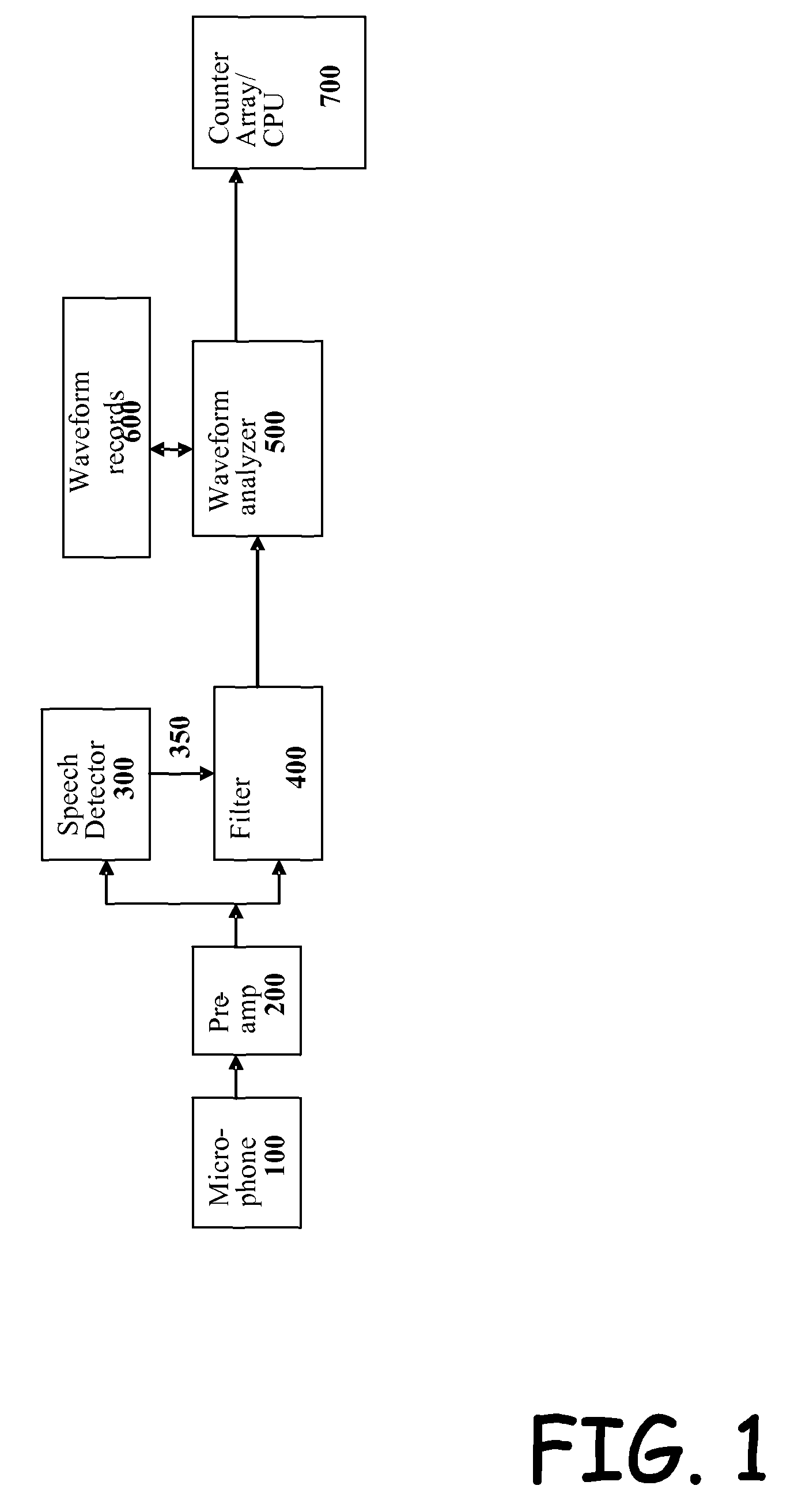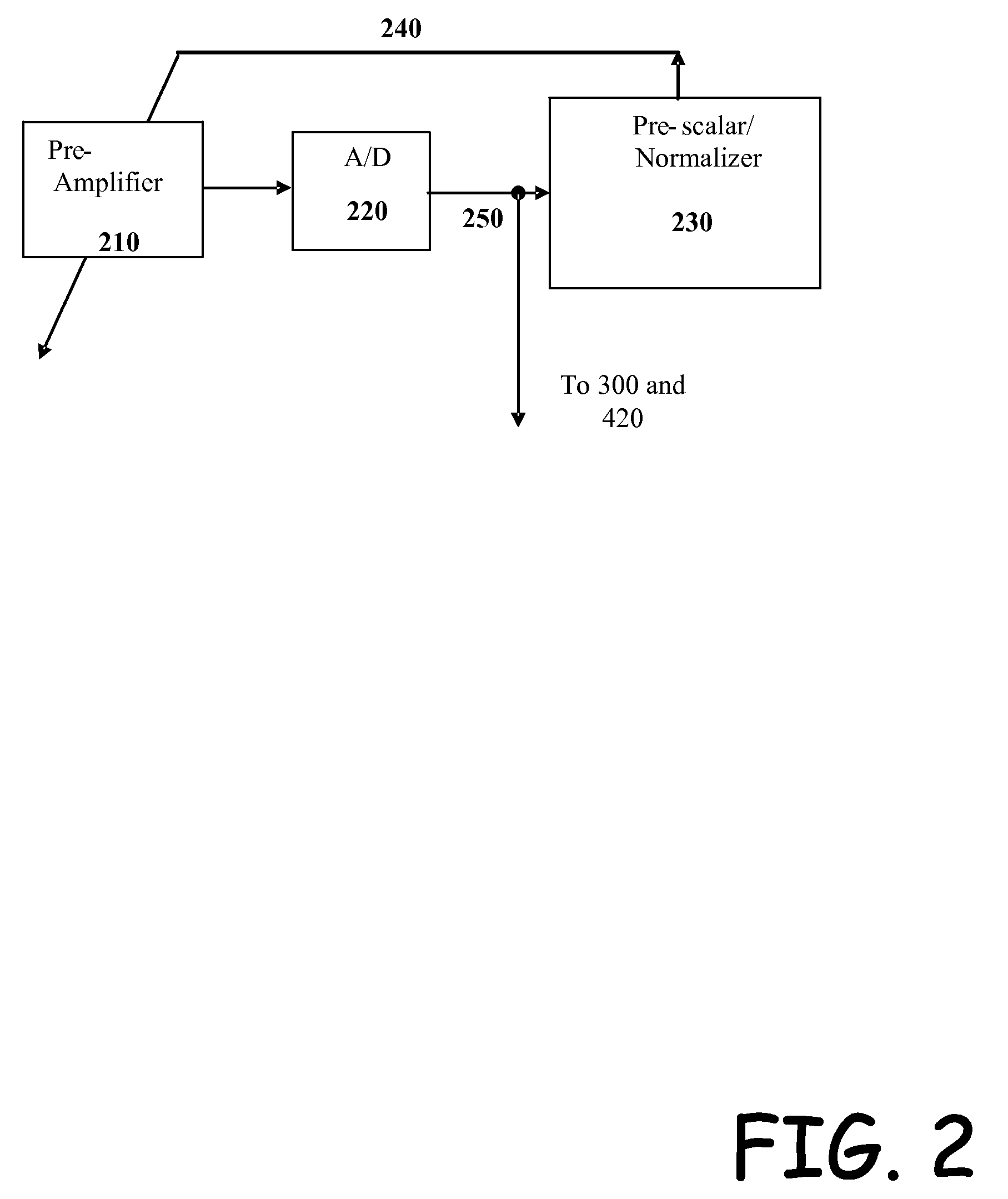Identifying activity in an area utilizing sound detection and comparison
a technology of activity identification and sound detection, applied in the field of activity monitoring and reporting, can solve the problems of not teaching the use of a programmable processor, the inability to teach the use of trend analysis as a means of detecting abnormal activity, and the inability to detect motion through motion or sound sensors
- Summary
- Abstract
- Description
- Claims
- Application Information
AI Technical Summary
Benefits of technology
Problems solved by technology
Method used
Image
Examples
Embodiment Construction
[0010]One embodiment of the present invention is a Wellness Monitoring system as illustrated in FIG. 1 for the purpose of detecting reoccurring non-speech sounds around a room representing habitual behavior of an individual. The sound energy is detected by microphone 100 and is fed to the ‘Pre-Amp’200. The output of the Pre-Amp 200 is a normalized digitized signal which is explained in FIG. 2 below and is simultaneously fed to a Speech Detector 300 and a ‘filter’400. The control signal 350 is used to signal the filter 400 when to pass the signal to the waveform analyzer block 500. The speech detector 300 is capable of detecting the presence of human voice (speech) and also can detect silence periods. The speech detector may also be programmed to detect other sounds that are of little to no interest, such as passing by automobiles, horn beeps, white noise generated by an air outlet of a heating and air conditioning unit, etc. Waveform Analyzer 500 takes non-speech signals between sil...
PUM
 Login to View More
Login to View More Abstract
Description
Claims
Application Information
 Login to View More
Login to View More - R&D
- Intellectual Property
- Life Sciences
- Materials
- Tech Scout
- Unparalleled Data Quality
- Higher Quality Content
- 60% Fewer Hallucinations
Browse by: Latest US Patents, China's latest patents, Technical Efficacy Thesaurus, Application Domain, Technology Topic, Popular Technical Reports.
© 2025 PatSnap. All rights reserved.Legal|Privacy policy|Modern Slavery Act Transparency Statement|Sitemap|About US| Contact US: help@patsnap.com



